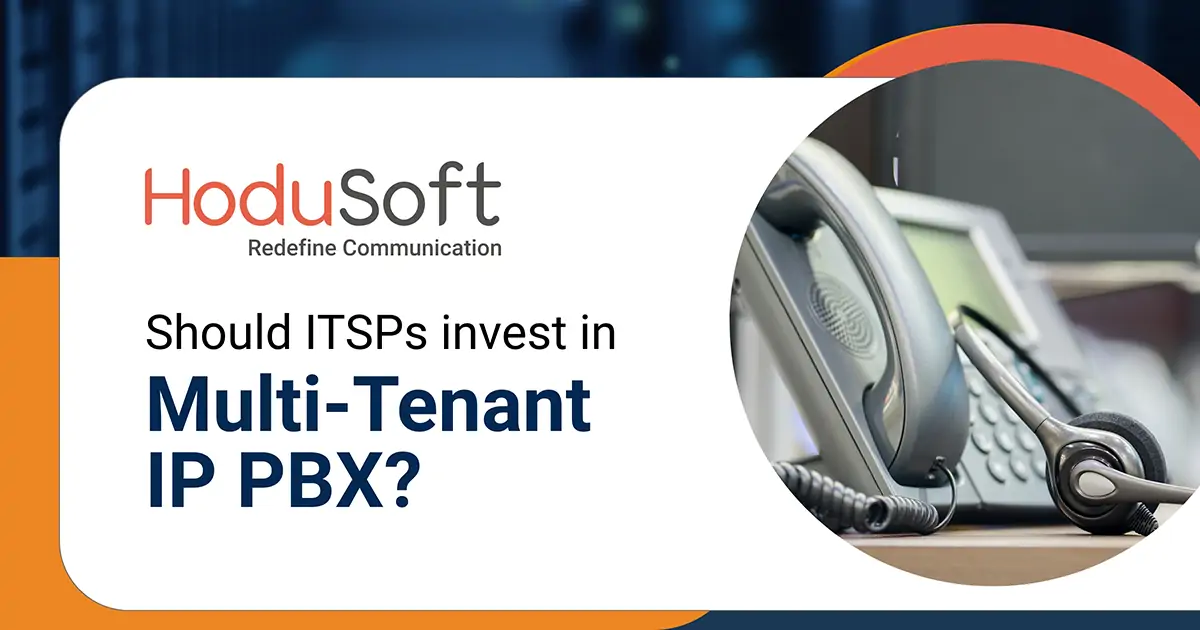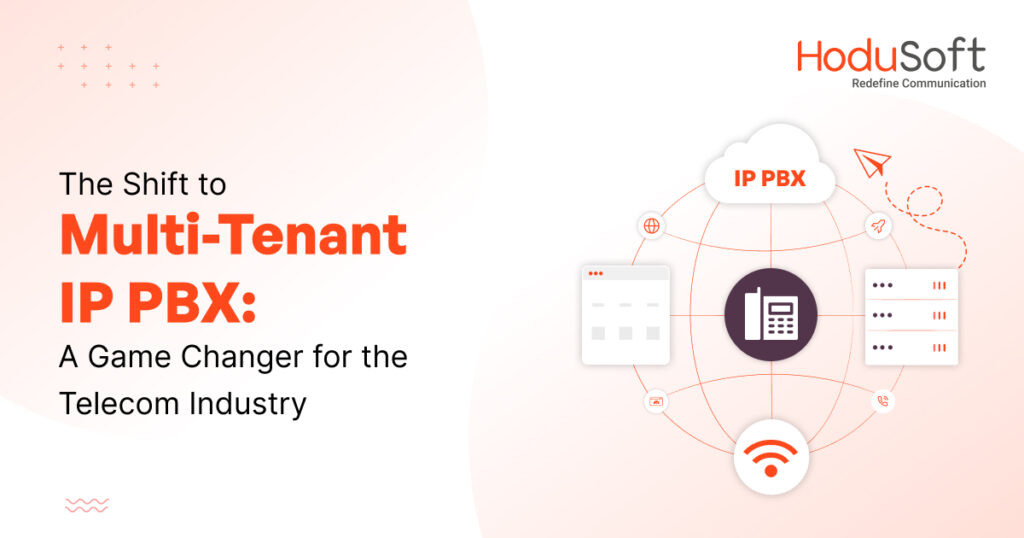Should ITSPs invest in Multi-Tenant IP PBX?
The changing landscape of business communications accelerated technological innovations in the telecom space. The last two decades witnessed a rather fast adoption of internet phones (IP phones) and a switch to a multi-tenant IP PBX across industries. VoIP (Voice over IP) which uses IP to connect Private Branch Exchanges (PBXs), is a terminology now being used interchangeably with IP telephony.
The hosted IP PBX software market is expected to grow at a rate of 20% by 2027. This is driven by a surge in the usage of sophisticated communication services across industries to reduce telecom equipment expenses. In this article, we will discuss the many benefits ITSPs stand to gain by switching to a multi-tenant IP PBX system.
But first, let us understand a few basic terminologies around the subject.
VoIP (Voice over IP)
VoIP technology enables users to make calls (audio/video) over an internet connection. It converts data into packets. It transmits voice and multimedia content over the internet instead of copper wires, unlike traditional phone systems.
ITSP (Internet Telephony Service Provider)
ITSP is a company that provides IP telephone communications services. ITSPs connect phones via the Internet with the help of gateway servers connected around the world. They are essentially VoIP providers that serve other businesses and end-users.
PBX (Private Branch Exchange)
PBX is essentially a telephone system enterprises use to connect users via voice calls on local lines within the organization. It has been used for a long time by enterprises (small, big, or medium) to enable specialized switching among users, to dial-in specific numbers to reach team members or branch offices across locations.
IP PBX
IP – Internet Protocol (IP) refers to the process of transmitting data to another server, meaning calls are established over the internet. PBX – A Private Branch Exchange refers to the internal telephone network. A PBX can be on-premises or hosted on the cloud securely. An IP PBX phone system enables users to make and receive phone calls over the internet while maintaining analog phones throughout the office.
Multi-Tenant IP PBX
A multi-tenant IP PBX is a communication solution where the main software is at a centralized location. The service provider creates tenant accounts or sub-accounts of this IP PBX solution for its different customers. The service provider can control what features each customer has access to and can use. The provider can also define the usage limit of each of its customers. A multi-tenant IP PBX phone system transmits voice by converting analog into digital signals over the internet, which requires VoIP infrastructure.
Why should ITSP’s invest in multi-tenant IP-PBX?
Many large-scale enterprises prefer having an on-premise IP PBX system. Managing an in-house business PBX system brings its own set of challenges for an ITSP company. Imagine catering to the needs of a huge number of customers, resellers, and businesses of an enterprise operating across different locations with an on-premise system, quite a nightmare. Investing in a multi-tenant IP PBX solution enables ITSPs to provide hosted PBX services to a large number of customers while keeping the whole communication flow smoother and faster. It enables an ITSP to have full control and serve businesses irrespective of their size and location.
A multi-tenant IP PBX system enables an ITSP to manage multiple customers or tenants with a single, well-managed communication solution from a central office or location. It allows them to provide a value add to their customers by delivering a unified communication experience translating to reduced operating costs for a business.
How does multi-tenant IP PBX work?
An on-premise IP PBX software requires frequent upgrades to keep pace with the changing communication needs of a business. On-premise maintenance translates to having an in-house IT team, infrastructure costs, communication systems downtime (for upgrades), which can mean loss of business making it an expensive proposition. Besides, industries like the finance sector, hospitals, etc. cannot afford such outages.
With a hosted multi-tenant IP PBX model, businesses eliminate the need for maintaining an in-house system, hardware and infrastructure cost, in-house IT team to operate and manage the system, etc. The IP PBX service provider will be the one responsible for making upgrades while helping businesses efficiently handle the communication process regardless of whether customers are using IP Phones, PSTN, or softphones.
Features ITSPs should look for when choosing multi-tenant IP PBX
Least Cost Routing (LCR)
The LCR system enables ITSPs to route the call traffic based on the cost. By using the LCR method ITSPs can route inbound and outbound communication traffic through predefined service providers that are least expensive. This makes it a win-win solution for both the service provider and the business.
Busy Lamp Field (BLF) and Presence
The BLF essentially helps ITSPs detect which extension is busy and which extension is free to receive calls. With the help of the presence feature enterprises can configure their IP phones with the BLF function. This in turn helps reduce call waiting times, resulting in better productivity and efficiency.
Integrated Payment Gateway facility
Businesses these days look for integrated solutions such as automatic billing and payment gateway integration within their communication software. Many multi-tenants IP PBX systems like HoduPBX come with such capabilities. Such integrations facilitate a quick and simple billing and payment procedure. The integrated payment gateway facility helps ITSPs to automatically keep a track of several customers, invoices, payments, etc, and avoids confusion, right from billing generation to payment receipt.
Auto Provisioning
Look for a multi-tenant IP PBX software solution with an auto-provisioning feature. Auto-provisioning helps enhance the overall functionality of business operations while reducing manual tasks to a great extent. It enables your customers to easily set up SIP phones into the network and make modifications in services by themselves as per their requirements. What’s more! They can do this via a web browser or an interface they are already familiar with.
Reseller Module
The multi-tenant IP PBX systems reseller module enables a business to create their resellers further allowing the resellers to sell the service to their customers. This opens new avenues for businesses letting them easily expand their reach by connecting with more potential customers translating to higher ROIs (Return on investment).
WebRTC technology
Today’s WebRTC technology eliminates the need to invest in any hardware and enables users to use their existing device (laptop/smartphone/IP phone) and communicate through a browser interface. Choosing a WebRTC backed multi-tenant IP PBX as a hosted solution means ITSPs have a minimum upfront investment.
Final thoughts
Investing in an IP PBX software with the above-mentioned features helps ITSPs not just save costs. It helps them broaden their service offering, and deliver a better customer experience.


